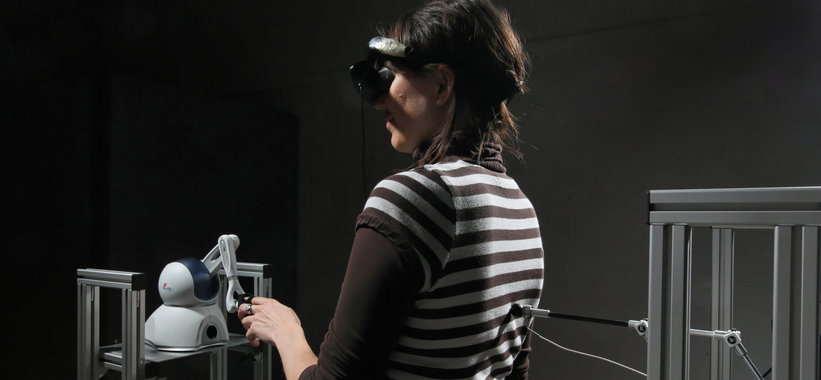
That eerie sensation of being stalked by some a supernatural presence is a real psychological phenomenon called “feeling of a presence (FoP).” Scientists from the Swiss Federal Institute of Technology (EPFL) have managed to identify the section of brain responsible for FoP through an experiment involving robots and brain illusions. Some participants were so unnerved that they asked to stop the experiment.
Published in the journal Current Biology, the research seeks to help us gain an understanding as to why people — especially those with schizophrenia or those in an extreme situation — start to feel “ghosts” or “presence.” These feelings, according to Dr. Giulio Rognini, are common in both people with neurological conditions and mountaineers or explorers. He explains: “what is astonishing is that they frequently report that the movements they are doing or the posture they are assuming at that specific moment is replicated by the presence. So if the patient is sitting, they feel the presence is sitting. If they are standing, the presence is standing, and so on.” The experiment sought to reproduce this mimicry by inducing an illusory feeling, not a hallucination.

To this end, Rognini set up a “master/slave” robot system in which the participant interacted with the master robot for three minutes while a slave robot – placed behind the participant – reflects those exact moments while touching the participants back. This trigger a tactile illusion in which the participant was touching their own back, a common enough feeling that wouldn’t trigger anything ghastly. However, by delaying the synchronization between the two robot’s actions, the participants’ brains were inadvertently “tricked” into feeling another presence in the room.
Rognini and his colleagues believe that the brain is getting confused because it’s miscalculating the body’s position and thereby identifying it as that of somebody else. He explains that “Our brain possesses several representations of our body in space. Under normal conditions, it is able to assemble a unified self-perception of the self from these representations. But when the system malfunctions because of disease – or, in this case, a robot – this can sometimes create a second representation of one's own body, which is no longer perceived as 'me' but as someone else, a 'presence'.”
The study’s major takeaway is that there’s a perfectly scientific reason for feeling ghostly presences. Brain scans performed on healthy participants (the experimental group) revealed that the odd sensations are caused by interference between the insular cortex, parietal-frontal cortex, and the temporal-parietal cortex, respectively, the three regions responsible for self-awareness, movement, and space recognition.
Via BBC/Motherboard
Advertisement
Learn more about Electronic Products Magazine





